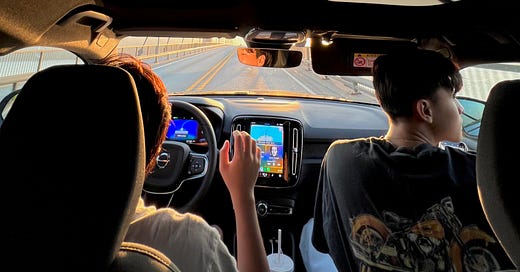During the frequent nights where I end up in a deep rabbit hole though Youtube’s various hit-or-miss recommended videos, I'll always happen to end up on a particular Youtuber’s channel: Xiaomanyc. Arieh Smith, or Xiaoma, is an American polyglot who visited China and is fluent in almost 20 languages ranging from Navajo to Aztec; however, his most impressive fluency to viewers is Mandarin.
And me? I’m a Chinese-American girl born in the US who is can-order-at-a-Mexican-restaurant fluent in Spanish after taking it for 4 years in high school, can’t-speak-to-relatives-but-can-understand-their-comments-about-me fluent in Mandarin after never practicing it past the age of 5, and got-a-full-score-on-the-STAAR-reading-test-in-4th-grade (not to brag) fluent in American English (although, no one’s ever impressed by this). But even through broken grammar and made-up words, I've always been fascinated by languages. Not only the multitude of them, but also their unexpected similarities and distinct differences. What I especially love about languages, is that there’s usually no direct translation for some words and even whole sentences. Like an error message or an undefined output, this probably should irritate me— which, I’ll admit, it sometimes does. But instead, it actually forces me to approach speaking a different language in a way that completely immerses me in its respective culture. For example, rather than translating word-for-word from English to Mandarin when I visit China, I am forced to completely redraft my thoughts. This is partly due to the backwards nature of both languages’ grammar, but also a prime example of language being the first gateway to cultural immersion.
Take, for example, the traditional Chinese breakfast item: youtiao (pronounced “yo-tee-ow). While at the Asian market with my friend, I asked her to help me find this item. Never hearing of youtiao before, she was struggling to understand my failed attempts to translate the word. Directly translated, “you” is “oil” and “tiao” is “strip”. A quick Google search will tell you that it’s a “Chinese long donut” or maybe even a “cruller” or a “churro”. In reality, the consistency of youtiao is saltier than a donut, straighter than a cruller, and softer than a churro. So what is the best translation for youtiao? Truthfully, I don't know. It’s hard to explain— as most things are. Instead, how about I take you to eat youtiao for yourself sometime?
My biggest fascination with languages lies with beginner language learners. Naturally, polyglots who travel to foreign countries and spark conversation with natives mesmerizes me; I am forever in awe of them. But as a part-Mandarin speaker living in the US, I am more in awe of those who put forth any amount of effort to try to learn a new language. For those living in the US whose first language is not English, attempting to communicate in their native language is a gesture of welcome. One of my favorite moments in the world is seeing the look on immigrants’ faces when someone tries to communicate with them in their native language. I’ve seen this look on the face of people in Xiaoma’s videos, the members of my Chinese church, and my mother. Oftentimes, I need to remind myself that the end goal is not to have the highest Duolingo streak or to be fluent in as many languages as possible, but to make a valiant effort to immerse myself in another culture. In the future, I see myself traveling to another country, speaking with the locals completely independent from Google translate, eating new foods, trying new clothing, and seeing the look again. Instead of getting hung up on my words, being lost in translation, I’ll be lost in the world.





